Is The Poverty Point Octagon World’s Largest Ancient Solstice Marker?
Ellen Lloyd - AncientPages.com - Located in northeast Louisiana, North America, about 25 miles from Lake Providence, is a giant C-shaped, 3,500-year-old earthwork known as Poverty Point, a place that remains a prehistoric mystery.
A bird-shaped mound at Poverty Point in Louisiana. Image credit: UNESCO World Heritage Site
The Poverty Point mounds are older than the Parthenon in Greece, the Great Wall of China, and the Colosseum in Rome. Some archaeoastronomers have discovered solar alignments at Poverty Point and suggested this place is the world's most significant ancient solstice marker.
The local hunter-gatherers of the Poverty Point culture constructed the bird-shaped mound. The inhabitants of Poverty Point used the natural resources plentiful in the Mississippi floodplain. Their culture is considered a pre-agricultural society, but the workforce and the thousands of hours of work it took to construct the earthworks suggest a highly evolved society, living and surviving together.
The ancient site consists of six enormous, concentric earthen ridges and several large mounds, including one of the largest in North America. The five aisles and six sections of cliffs form a partial octagon, and archaeologists think the ridges, once 5 feet (1.5 meters) high, were foundations for dwellings.
Archaeological Excavations At Poverty Point Mounds
Archaeologists excavating at the Poverty Point site have unearthed hundreds of intriguing ancient artifacts. Bird effigies, stone tools, spears, and gems not native to Louisiana have been found, along with hundreds of round clay balls. Historians believe that these clay balls were used for cooking. The balls were heated in a fire and then placed in a pit, which created an oven for cooking meat and other foods.
Little is known about Poverty Point houses; limited evidence suggests they may have looked similar to those above. Credit: Louisiana State Exhibit Museum
The massive earthworks have been nominated to become a UNESCO World Heritage Site because of their cultural significance.
What Was The Purpose Of The Earthworks?
Scientists still need to understand the purpose of the earthworks. Over the years, various theories have been presented.
Map of Poverty Point. Credit: Maximilian Dörrbecker (Chumwa) CC BY-SA 2.5
Some scholars suggest the Poverty Point site was a permanent residence of a large, socially, politically, and economically ranked population. The town was spatially organized in a geometrically symmetrical order.
At the beginning of 1980, archaeoastronomers Kenneth Brecher and William Haag discovered what they considered to be solar alignments at Poverty Point. The shape of the overall site is semi-octagonal, different in design from any others in the United States. The aisles or avenues define a central point within the area, although it is not marked in any way that has been identified.
Artist's conception of the Poverty Point archaeological site near Epps, Louisiana at it's height. Credit: Herb Roe - CC BY-SA 2.5
According to researchers Brecher and Haag, two of the avenues may have pointed to the setting location of Canopus (190° degrees) and Gamma Draconis (344° degrees).
In the book Knowledge in Motion: Constellations of Learning Across Time and Place, Andrew P. Roddick, an assistant professor in anthropology at McMaster University, writes that "Poverty Point was erected on a meridian, actually tow meridians spread 600 meters apart. In practice, the layout of mounds on a straight line is merely a matter of sighting and back-sighting, but the practice of triangulation adds the possibility of measurement across space. It is in fact depended on known distances between points."
Poverty Point may be the world's most prominent ancient solstice marker, but much more research must be conducted before we can reach this conclusion.
For now, the function and use of Poverty Point remain a mystery.
Written by - Ellen Lloyd – AncientPages.com
Updated on March 1, 2024
Copyright © AncientPages.com All rights reserved. This material may not be published, broadcast, rewritten or redistributed in whole or part without the express written permission of AncientPages.com
Expand for referencesMore From Ancient Pages
-
 Norman Dominance Of Europe Inspired First Crusades In The Holy Land – New Book Claims
History | Sep 8, 2022
Norman Dominance Of Europe Inspired First Crusades In The Holy Land – New Book Claims
History | Sep 8, 2022 -
 Ancient Glass Workshop Unearthed At Iron Age Of Němčice
Archaeology | Jul 24, 2023
Ancient Glass Workshop Unearthed At Iron Age Of Němčice
Archaeology | Jul 24, 2023 -
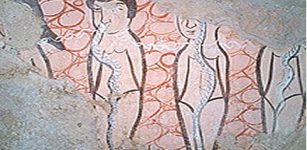 Ancient Monastery In The Middle Of ‘Syria’s Stonehenge’ – Underground Caves, Tombs, Stone Circles Older Than Pyramids
Civilizations | Nov 13, 2015
Ancient Monastery In The Middle Of ‘Syria’s Stonehenge’ – Underground Caves, Tombs, Stone Circles Older Than Pyramids
Civilizations | Nov 13, 2015 -
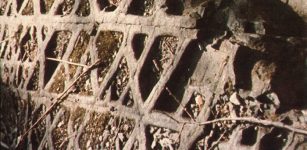 America’s Mysterious Waffle Rock Formation
Featured Stories | Apr 15, 2014
America’s Mysterious Waffle Rock Formation
Featured Stories | Apr 15, 2014 -
 Selah – Mysterious Biblical Word Of Unknown Meaning
Biblical Mysteries | Jan 5, 2018
Selah – Mysterious Biblical Word Of Unknown Meaning
Biblical Mysteries | Jan 5, 2018 -
 Abu Dhabi Fossil Dunes May Have Inspired The Ancient Great Flood Story – Professor Says
Archaeology | Jul 10, 2022
Abu Dhabi Fossil Dunes May Have Inspired The Ancient Great Flood Story – Professor Says
Archaeology | Jul 10, 2022 -
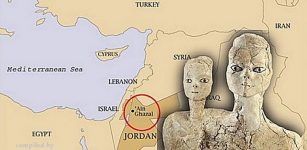 Mysterious Ancient Statues From Jordan With Millennia-Old Secrets
Civilizations | Oct 24, 2018
Mysterious Ancient Statues From Jordan With Millennia-Old Secrets
Civilizations | Oct 24, 2018 -
 The Caesar Cipher: Ancient And Simple Yet Effective Cipher Used By Julius Caesar
Ancient History Facts | May 30, 2018
The Caesar Cipher: Ancient And Simple Yet Effective Cipher Used By Julius Caesar
Ancient History Facts | May 30, 2018 -
 Wreckage of The French Steamship That Sank In Atlantic In 1856 Found Off The Coast Of Massachusetts
Underwater Discoveries | Sep 23, 2024
Wreckage of The French Steamship That Sank In Atlantic In 1856 Found Off The Coast Of Massachusetts
Underwater Discoveries | Sep 23, 2024 -
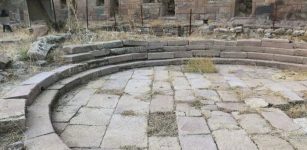 Meat And Fish Market Uncovered In Ancient City Of Aigai, Turkey
Archaeology | Nov 3, 2018
Meat And Fish Market Uncovered In Ancient City Of Aigai, Turkey
Archaeology | Nov 3, 2018 -
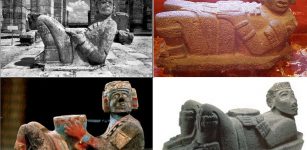 Image Of The Day: Chacmool – Famous Ancient Statue Of Pre-Columbian Mesoamerica
Image Of The Day | Sep 10, 2015
Image Of The Day: Chacmool – Famous Ancient Statue Of Pre-Columbian Mesoamerica
Image Of The Day | Sep 10, 2015 -
 Secret Passageways And Caves Beneath UK’s City Of Nottingham
Featured Stories | Feb 14, 2023
Secret Passageways And Caves Beneath UK’s City Of Nottingham
Featured Stories | Feb 14, 2023 -
 Rare Magic Mirror In Cincinnati Museum Has A Secret Hiding In Plain Sight
Artifacts | Jul 19, 2022
Rare Magic Mirror In Cincinnati Museum Has A Secret Hiding In Plain Sight
Artifacts | Jul 19, 2022 -
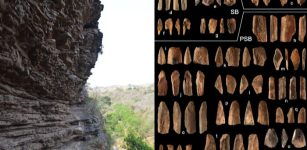 80,000-Year-Old Bone Tools Discovered In South Africa Sheds New Light How Homo Sapiens Evolved
Archaeology | Dec 5, 2022
80,000-Year-Old Bone Tools Discovered In South Africa Sheds New Light How Homo Sapiens Evolved
Archaeology | Dec 5, 2022 -
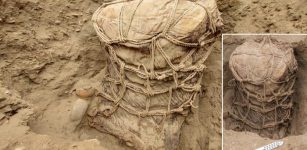 A 500-Year-Old Funerary Bundle And Pottery Probably Belonging To Ychsma Culture – Unearthed Near Lima, Peru
Archaeology | May 22, 2023
A 500-Year-Old Funerary Bundle And Pottery Probably Belonging To Ychsma Culture – Unearthed Near Lima, Peru
Archaeology | May 22, 2023 -
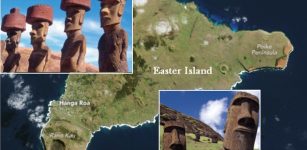 Easter Island’s Society Was Sophisticated And Its People Shared Information And Collaborated
Archaeology | Aug 14, 2018
Easter Island’s Society Was Sophisticated And Its People Shared Information And Collaborated
Archaeology | Aug 14, 2018 -
 Was Princess Tadukhipa Of The Mitanni Kingdom Queen Nefertiti?
Civilizations | Mar 15, 2016
Was Princess Tadukhipa Of The Mitanni Kingdom Queen Nefertiti?
Civilizations | Mar 15, 2016 -
 Resourceful Neanderthals Could Dive 13ft If Necessary To Collect Shells
Archaeology | Jan 16, 2020
Resourceful Neanderthals Could Dive 13ft If Necessary To Collect Shells
Archaeology | Jan 16, 2020 -
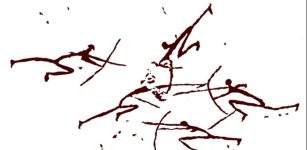 Violent Conflict Played A Crucial Role In Early Farming Societies In Neolithic Europe – New Study
Archaeology | Jun 19, 2023
Violent Conflict Played A Crucial Role In Early Farming Societies In Neolithic Europe – New Study
Archaeology | Jun 19, 2023 -
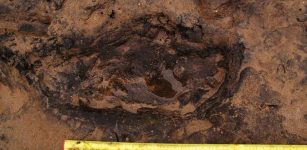 Rare Ancient Human Footprints Found On Gower Peninsula, Wales Are 7,000 Years Old
Archaeology | Mar 8, 2017
Rare Ancient Human Footprints Found On Gower Peninsula, Wales Are 7,000 Years Old
Archaeology | Mar 8, 2017





